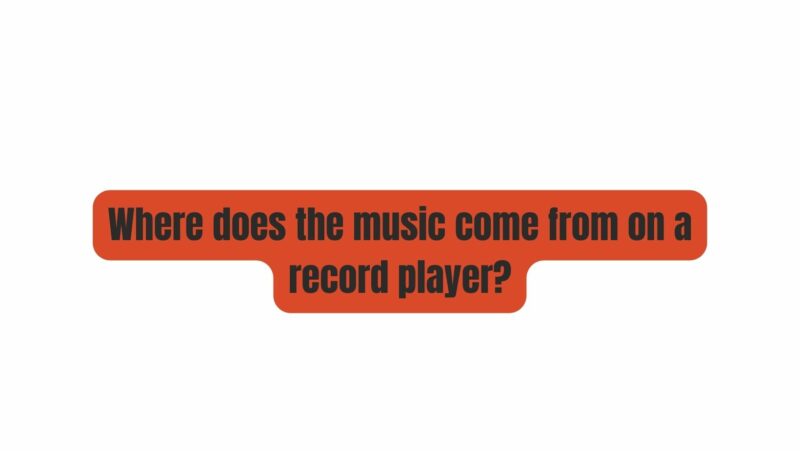The music on a record player comes from the grooves on the record. The grooves are spiral-shaped and very fine. They are cut into the record by a machine called a lathe. The grooves represent the sound waves of the music.
When the record is played, the needle of the record player follows the grooves. The needle vibrates as it moves through the grooves. These vibrations are converted into electrical signals by the cartridge. The electrical signals are then amplified by the amplifier and sent to the speakers. The speakers convert the electrical signals back into sound waves, which we can hear.
The quality of the sound produced by a record player depends on a number of factors, including the quality of the record, the record player, and the speakers.
Here are some tips for getting the best sound from your record player:
- Use a high-quality record player.
- Use good-quality speakers.
- Clean your records regularly.
- Store your records in a cool, dry place.
By following these tips, you can enjoy the best possible sound from your record player.
Here are some additional information about where the music comes from on a record player:
- The grooves on a record are very small. They are about 0.00005 inches wide and 0.000004 inches deep.
- The grooves are cut into the record at a constant speed. This is called the record’s pitch.
- The pitch of a record is measured in revolutions per minute (RPM). A standard LP record plays at 33⅓ RPM.
- The number of grooves on a record determines how much music it can hold. A standard LP record can hold about 45 minutes of music.
- Vinyl records are susceptible to damage from dust, dirt, and scratches. It is important to clean and store your records properly to prevent damage.

